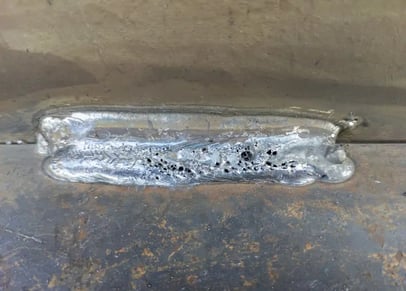What is Porosity in Welding: Necessary Tips for Getting Flawless Welds
What is Porosity in Welding: Necessary Tips for Getting Flawless Welds
Blog Article
The Science Behind Porosity: A Comprehensive Overview for Welders and Fabricators
Understanding the detailed mechanisms behind porosity in welding is critical for welders and producers making every effort for impressive craftsmanship. From the composition of the base materials to the details of the welding procedure itself, a wide range of variables conspire to either aggravate or reduce the visibility of porosity.
Comprehending Porosity in Welding
FIRST SENTENCE:
Examination of porosity in welding reveals essential insights right into the honesty and top quality of the weld joint. Porosity, defined by the existence of tooth cavities or gaps within the weld metal, is a common worry in welding processes. These voids, otherwise properly addressed, can endanger the structural honesty and mechanical residential properties of the weld, resulting in possible failures in the completed item.

To discover and evaluate porosity, non-destructive testing methods such as ultrasonic testing or X-ray assessment are frequently employed. These techniques enable for the recognition of interior issues without compromising the integrity of the weld. By analyzing the dimension, shape, and circulation of porosity within a weld, welders can make enlightened choices to improve their welding procedures and accomplish sounder weld joints.

Variables Influencing Porosity Development
The incident of porosity in welding is influenced by a myriad of aspects, varying from gas shielding performance to the intricacies of welding criterion setups. Welding criteria, including voltage, existing, take a trip rate, and electrode type, likewise impact porosity development. The welding strategy employed, such as gas metal arc welding (GMAW) or secured metal arc welding (SMAW), can affect porosity formation due to variations in heat circulation and gas insurance coverage - What is Porosity.
Effects of Porosity on Weld High Quality
Porosity formation dramatically compromises the structural integrity and mechanical properties of bonded joints. When porosity exists in a weld, it develops spaces or dental caries within the product, reducing the overall stamina of the joint. These voids function as stress focus points, making the weld much more at risk to breaking and failure under lots. The existence of porosity additionally weakens the weld's resistance to deterioration, as the caught air or gases within the voids can react with the surrounding environment, bring about destruction in time. In addition, porosity can hinder the weld's capability to withstand pressure or impact, further endangering the total high quality and integrity of the welded framework. In crucial applications such as aerospace, automobile, or architectural constructions, where safety and security and sturdiness are critical, the harmful impacts of porosity on weld top quality can have severe consequences, highlighting the significance of lessening porosity through correct welding methods and treatments.
Techniques to Reduce Porosity
Additionally, using the suitable welding parameters, such as the proper voltage, existing, and take a trip speed, is important in avoiding porosity. Maintaining a consistent arc length and angle during welding also assists reduce the possibility of porosity.

Making use of the appropriate welding strategy, such as back-stepping or utilizing a weaving activity, can additionally aid disperse heat equally and decrease the opportunities of porosity development. By implementing these techniques, welders can efficiently decrease porosity and create high-quality bonded joints.

Advanced Solutions for Porosity Control
Implementing cutting-edge modern technologies and ingenious methods plays a critical duty in accomplishing exceptional control over porosity in welding procedures. One innovative option is the usage of sophisticated gas mixes. Securing gases like helium or a combination of argon and hydrogen can assist lower porosity by supplying far better arc stability and improved gas protection. In addition, using advanced welding methods such as pulsed MIG welding or modified environment welding can also assist alleviate porosity issues.
Another advanced service involves making use of sophisticated welding devices. For circumstances, making use hop over to here of devices with integrated attributes like waveform control and advanced power sources can improve weld high quality and decrease porosity risks. In addition, the application of automated welding systems with specific control over criteria can substantially lessen porosity problems.
Moreover, integrating advanced monitoring and evaluation technologies such as real-time X-ray imaging or automated ultrasonic testing can aid in finding porosity early in the welding procedure, enabling instant corrective actions. On the whole, incorporating these advanced services can substantially boost porosity control and improve the general top quality of welded components.
Final Thought
In conclusion, comprehending the scientific research behind porosity in check my source welding is find this crucial for welders and makers to generate premium welds - What is Porosity. Advanced options for porosity control can even more boost the welding procedure and guarantee a solid and dependable weld.
Report this page